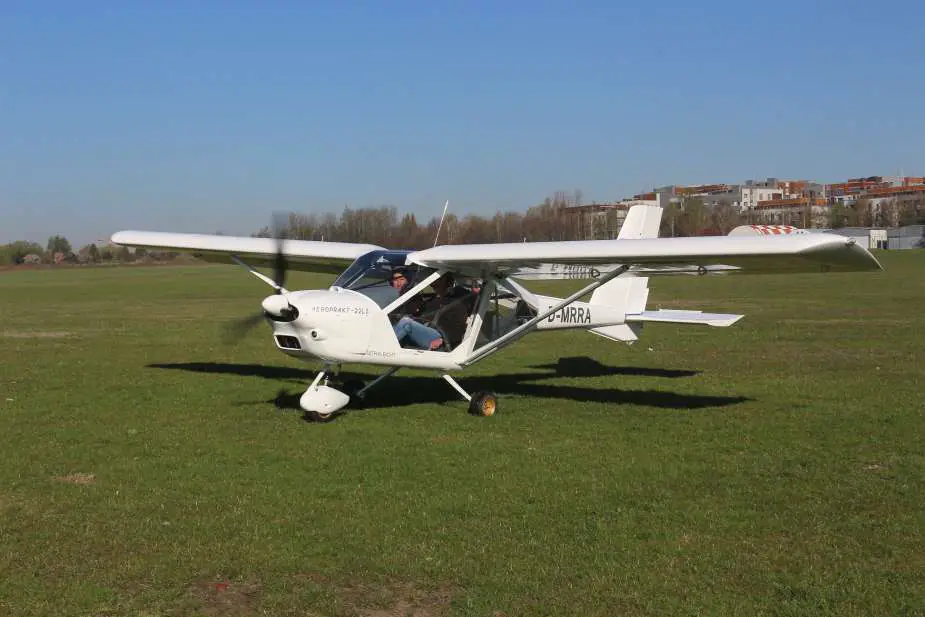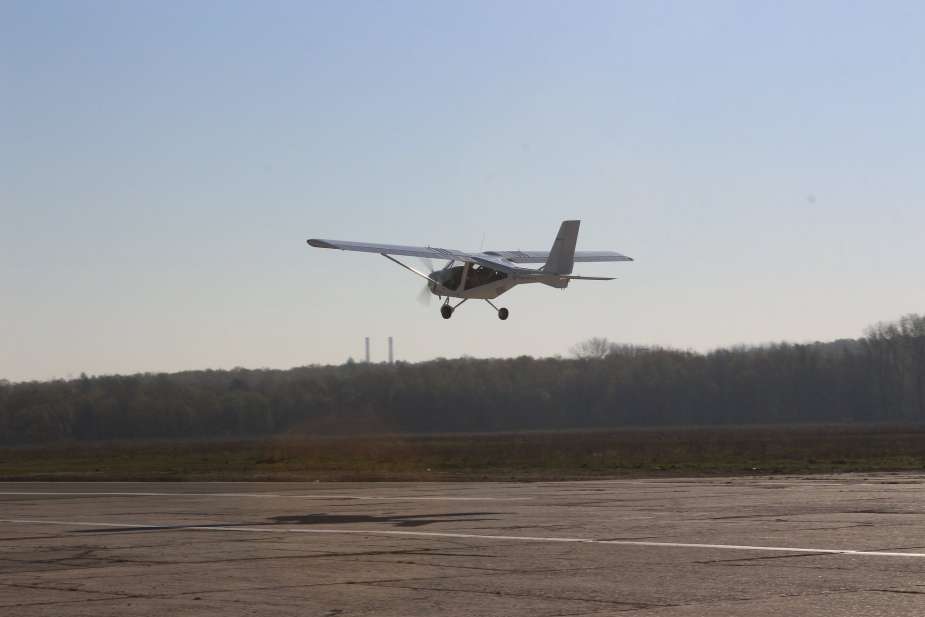- Army
- Conflicts in the world
- Israel - Iran conflict 2025
- Pakistan - India Conflict 2025
- Russia Ukraine War 2022
- Libya conflict day by day
- HAMAS - Israel War 2023
- Operation Serval in Mali French Army
- Sangaris operation Central African Republic
- Sangaris opération militaire République Centreafrique
- Ukraine - Russia conflict
- Syria conflict news
- Defence & Security Industry Technology
- Armies in the world
- Analysis Defense and Security Industry
- Conflicts in the world
- Navy
- Air
Ukrainian-Converted A-22 Foxbat Drone Strikes Russian Shahed Drone Factory
On April 4, 2024, reports from Russian media disclosed the use of two Aeroprakt A-22 Foxbat aircraft modified by Ukrainian forces to serve as kamikaze drones, to conduct two strikes in the Republic of Tatarstan, situated over 1,200 km away from the Ukrainian border. Targeting a Shahed-136 drone manufacturing facility and an oil refinery, the attack marked the first occurrence of such a strategy within this region and the first use of such UAVs since the start of the current war.
Follow Army Recognition on Google News at this link

Two Aeroprakt A-22s 'Foxbat' aircraft converted into suicide drones by Ukraine hit a Geran-2 drone factory and an oil refinery 1,200 km inside Russia. (Picture source: Russian media and Aeroprakt)
The targets of these drone strikes were notably strategic. One was a production facility within the Alabuga Special Economic Zone (SEZ), involved in the manufacturing of Geran-2 kamikaze drones, a model derived from the Iranian Shahed-136. The second target was the TANECO oil refinery near Nizhnekamsk, one of the largest in Russia, located roughly 20 kilometers from the Alabuga SEZ. This attack on TANECO forms part of a pattern of strikes against Russian oil infrastructure, contributing to the broader impact on the country's refinery capabilities, with TANECO being the 17th such facility targeted during the conflict, representing a 15% reduction in Russia's total refinery capacity.
Witnesses reported seeing a drone crash into the Geran-2 facility, causing a significant explosion and extensive damage to the infrastructure. Despite these accounts, Rustam Minnikhanov, the leader of Tatarstan, suggested that the operations of the enterprises within the SEZ were not significantly disrupted, a statement that appeared to contrast with the observable damage.
Speculation by Mikhail Khodarenok, a Russian reserve colonel, pointed towards the use of advanced Western guidance systems, including the US NAVSTAR global positioning system or Elon Musk's Starlink system, for precision targeting in these attacks. He also questioned the adequacy of Russia's air defense capabilities and the level of accountability of its military leadership in protecting Russian airspace.
The basis of the drones involved in these attacks, the Aeroprakt A-22 Foxbat, also known as the Valor in the United States and the Foxbat in the UK and Australia, is a Ukrainian-designed sports light aircraft manufactured by Aeroprakt. Designed by Yuri Yakovlev, it features a distinctive high-wing design and tricycle landing gear. With its first flight in October 1996 and introduction in 1999, the A-22 has remained in production since 2000. Its structure combines metal with composite materials for key components, offering durability and lightness. Notable for its extensive glazing, the A-22 employs a 3-axis control system and flaperons, resulting in a stall speed of 52 km/h. Interestingly, it is supplied either as a ready-to-fly factory-built aircraft or as a kit that can be assembled in approximately 500 man-hours, comprising 152 pieces.
In terms of specifications, the A-22 Foxbat/Vigor is known to be powered by either an 80 hp Rotax 912UL, an 85 hp Jabiru 2200, or a 100 hp Rotax 912ULS engine. Its maximum takeoff weight is 450 kg, with a cruise speed of 160 km/h and a maximum speed of 170 km/h. With a maximum range of 1,100 km, the A-22 is normally designed for various recreational flying activities. Additionally, the aircraft features a compact size, with a wingspan of 10.10 m and a length of 6.3 m, making it maneuverable and easy to handle.

The Aeroprakt A-22, also known as the Valor in the United States and the Foxbat in the UK and Australia, is a Ukrainian-designed sports light aircraft. (Picture source: Aeroprakt)
The conversion of such aircraft into a kamikaze UAV capable of executing a mission over a distance of more than 1,200 kilometers could therefore potentially involve a series of technical modifications across various aspects of the aircraft. This hypothetical process might start with structural adjustments where the airframe could be reinforced to potentially accommodate the additional stresses from carrying increased fuel and a payload. This reinforcement might include elements such as the fuselage and wings. At the same time, optimizing the weight would be crucial; non-essential components like seats, interior panels, and manual control systems could be removed to both reduce weight and free up space for necessary modifications.
To cover the distance to Tatarstan from the Ukrainian border, modifications to increase fuel capacity or improve fuel efficiency might be necessary, considering the original A-22 range of only 1,100 km. Enhancements to the propulsion system could involve the potential replacement of the original engine with a more powerful variant to support the increased load while maintaining fuel efficiency over long distances. Moreover, the A-22's fuel capacity could have been expanded through the addition of extra tanks, positioned in spaces vacated by the removal of non-critical components.
Essential for UAV conversion, upgrades to the control and navigation systems would be crucial. An advanced control system might be installed to manage flight operations from a distance including takeoff, flight navigation, real-time data transmission, and mission execution. This system could be complemented by long-range communication capabilities for remote control and data transmission back to a command center. Precision navigation could be achieved through the use of high-accuracy GPS, inertial navigation systems, and waypoint navigation systems, allowing for detailed route planning and execution.
For the kamikaze operation, the aircraft had to be configured to carry an explosive payload. A designated compartment could be engineered within the aircraft to securely contain the explosives, designed for safe transport and effective detonation at the target. An activation mechanism might be developed to detonate the payload either remotely or upon impact with the target.
To help the UAV avoid enemy defenses during its mission, secure communication channels, encrypted to prevent interception, could be crucial for maintaining control integrity. The planning of the UAV's flight path also might take into account the avoidance of known air defense systems, with strategies such as flying at low altitudes to reduce radar detection being considered.
Finally, several tests under conditions that simulate actual mission parameters would be essential to validate the UAV's potential operational effectiveness, control system reliability, and detonation mechanisms. Safety measures and reliability protocols could be established to manage the risks associated with navigation and mission execution, which might include emergency self-destruction procedures.
Therefore, converting the Aeroprakt A-22 Foxbat into a kamikaze UAV would necessitate a coordinated effort among specialists in aerospace engineering, avionics, and military strategy, alongside significant resources and extensive testing, to develop, refine, and operationalize the UAV for its intended purpose, while maintaining absolute secrecy. The secrecy could have been supported by the fact that the Aeroprakt A-22 Foxbat is also provided as a kit that can be assembled in around 500 man-hours.

To cover the distance to Tatarstan from the Ukrainian border, modifications to increase fuel capacity or improve fuel efficiency might be necessary, considering the original A-22 range of only 1,100 km. (Picture source: Aeroprakt)


























